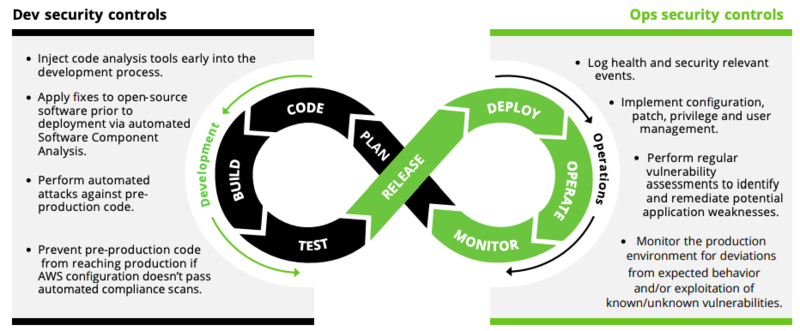Cloud computing is getting more and more popular. Businesses take advantage of the fact that it doesn’t require any on-site hardware for data storage and processing, which saves tons of money.
But many companies still struggle to provide an appropriate level of security for their data. Often, they lack applications, processes, and tools to ensure proper functioning and security in the cloud environment.
This is where DevSecOps comes in. Companies using scalable cloud infrastructure like AWS can use its tools to ensure continuous cloud security DevSecOps compliance.
In this post, we will explain why the combination of AWS and DevSecOps is an effective strategy against security threats. But first, let’s quickly go over the definitions.
What is AWS?
AWS (Amazon Web Services) is a scalable cloud computing platform for businesses. It’s the world’s leading cloud provider of computing power, database storage, and content delivery, which businesses use to scale and grow.
Businesses rely on AWS to:
-
Store and backup critical business applications
-
Host websites and ensure a fast loading speed
-
Run gaming applications with cloud computing power
-
Launch and scale business applications without requiring operating systems
AWS offers cloud data security tools to keep data from being accessed by third parties. The platform has a great reputation and a secure and reliable cloud solution. It provides supporting services for DevSecOps, including CodeDeploy (automation of code deployments) and CodeStar (a service for creating and managing software development).
Related: The Role of Cloud in SaaS
DevSecOps Meaning
DevSecOps (Development, Security, and Operations) is a new model of product development and deployment that adds automated security processes and tools to DevOps. This model ensures continuous security testing that reduces the need for extensive security checks at the end of the development process.
Using DevSecOps simply means adding security processes to product development at the earliest stages. This involves a close collaboration between developers and security specialists throughout the entire software product development lifecycle.
DevSecOps emerged as a need to improve security at all stages of the DevOps process. Since 47% of developers have no time to work on security, adopting this model is a strategy to improve security in cloud environments.
Deloitte made this amazing visual (see below) to explain the mechanism of DevSecOps. As you can see, security controls are embedded into the software delivery process.

Integrating and automating security into a DevSecOps model. Source: Deloitte
Related: Architecting Security into Your Company
DevSecOps & AWS: An Effective Strategy for Safeguarding Data and Applications
AWS provides security tools for data protection, but organizations are responsible for a big share of processes.
As cloud providers, AWS guarantees the security of the platform (this includes data computing, storing, processes, and networking processes), but companies need to ensure security for applications they set up and run on top of AWS infrastructure (this includes identity and access management, firewall settings, encryption, etc.)
That doesn’t mean that AWS leaves users with no means to achieve DevSecOps principles. In fact, it’s quite the opposite: the platform helps organizations by providing them with automated tools that monitor, analyze, and protect against cybersecurity threats.
These automated tools are available for AWS users:
-
Dome9. An Amazon-recommended third-party solution that allows businesses to manage data security and compliance across all AWS services
-
AWS Lambda. Helps to automate incident management process by deploying investigative applications to prevent security issues from going unaddressed
-
AWS Config. A tool that continuously monitors and evaluates configurations of AWS resources to find and fix security issues
-
AWS CloudTrail. Records all actions made in an AWS account to provide the user with a complete history for security audit
-
Amazon CodeGuru. A solution that checks the quality of code and makes recommendations according to the best data security practices
-
Amazon Inspector. A tool that automatically evaluates applications for security issues and notifies the user to help improve security compliance
-
Amazon Cloudwatch Alarms. A tool for automatic monitoring of and finding security issues in applications and infrastructure
-
Amazon CloudWatch Events. A real-time monitoring solution that helps identify and respond to unexpected or unauthorized changes made in a user’s AWS resources
Using these AWS services to protect critical infrastructure is an effective way to ensure the security of data and applications. In other words, AWS gives companies pretty much everything they need to comply with DevSecOps requirements, so all they need is a talent to manage security processes.
Related:
AWS and DevSecOps: Summary
Using AWS for business applications means having access to some of the best security solutions. Still, companies are responsible for what goes on top of AWS’s infrastructure, so they need appropriate human resources to ensure security compliance.

